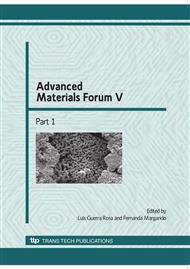p.41
p.47
p.54
p.60
p.68
p.76
p.82
p.91
p.98
Effect of Heat Treatments on Mechanical Properties and Fatigue Resistance of Ti-35Nb Alloy Used as Biomaterial
Abstract:
Titanium alloys form the most versatile class of metallic materials used as biomaterials. Among them it is foreseen that the type titanium alloy will be a prominent one for orthopedic applications. Aim of the present work was to prepare and characterize a type titanium alloy containing 35 wt.% Nb. Samples were cooled from the phase temperatures at different rates. This work includes the effects of heat treatment on the microstructure and hardness, tensile and fatigue properties in air at room temperature. The results showed that microstructure of slow cooled samples are formed by precipitates of and phases in a matrix. After rapid cooling, the microstructure consists of phase and ” martensite. Mechanical testing showed that the elastic modulus and Vickers hardness of slow cooled samples were significantly higher than that obtained by rapid cooling. On the other hand, it was observed that slow cooled samples showed higher tensile strength and lower ductility. The rapid cooled sample showed fatigue resistance higher than that of slow cooled samples.
Info:
Periodical:
Pages:
68-75
Citation:
Online since:
January 2010
Authors:
Price:
Сopyright:
© 2010 Trans Tech Publications Ltd. All Rights Reserved
Share:
Citation:


